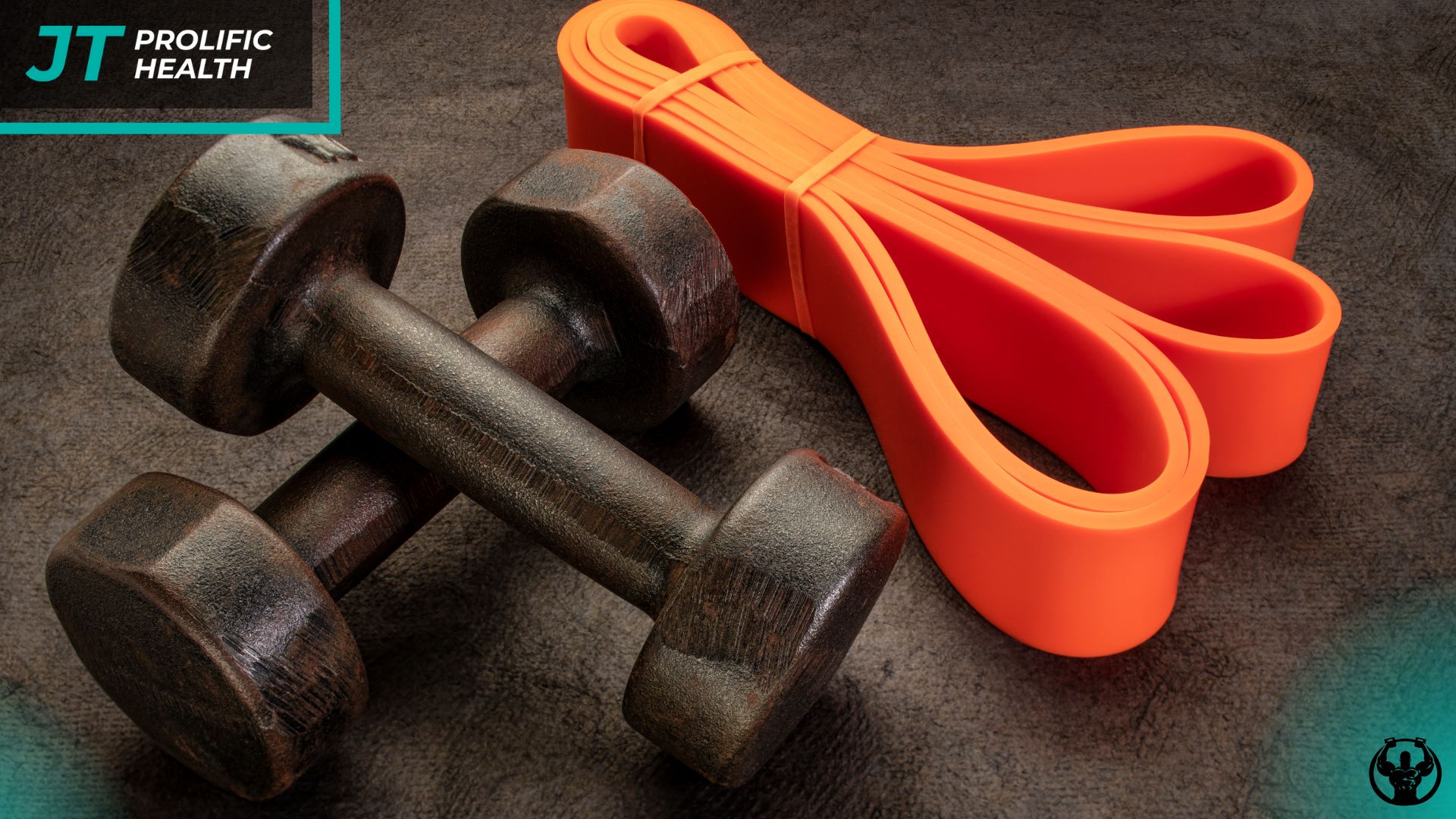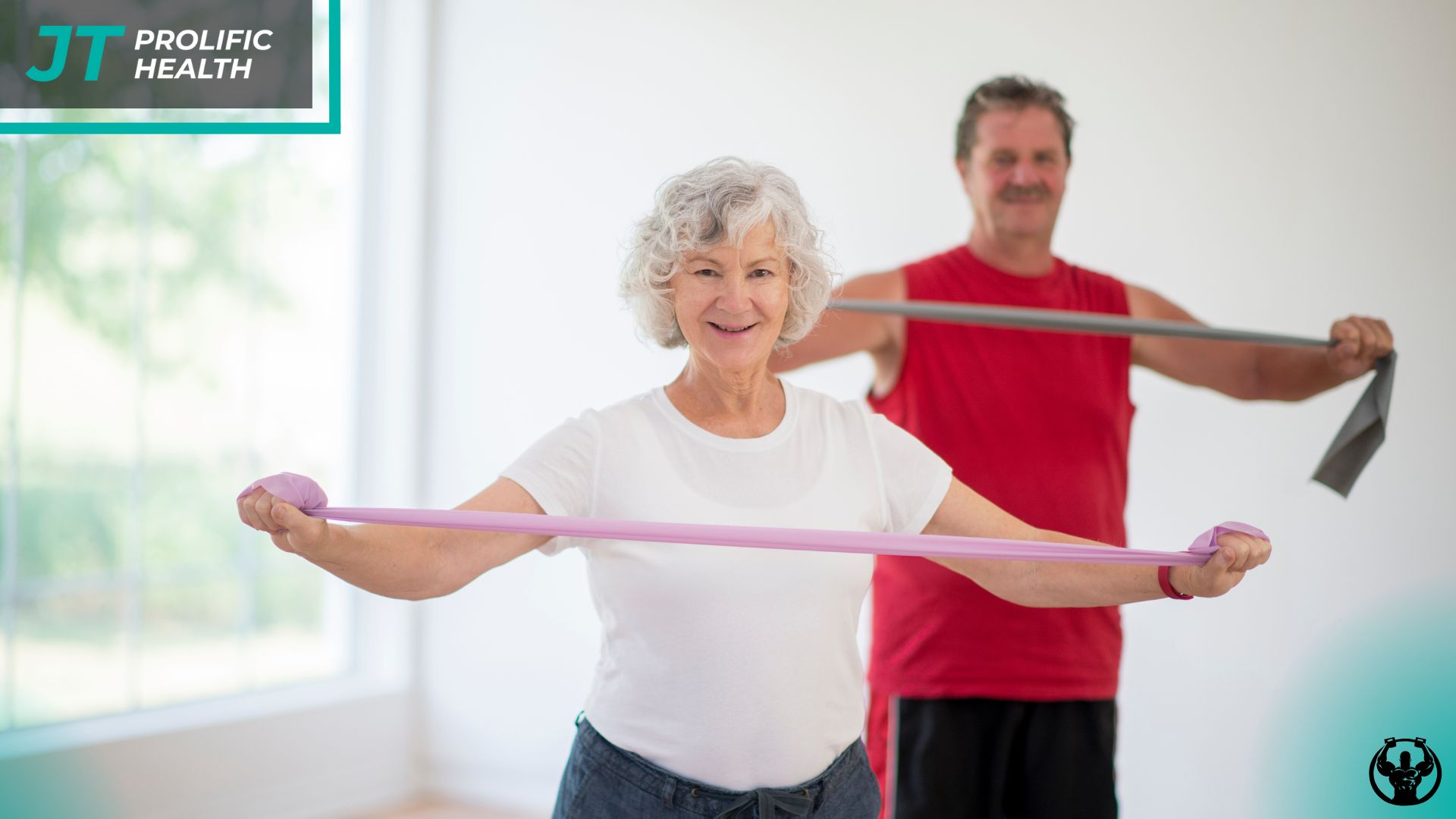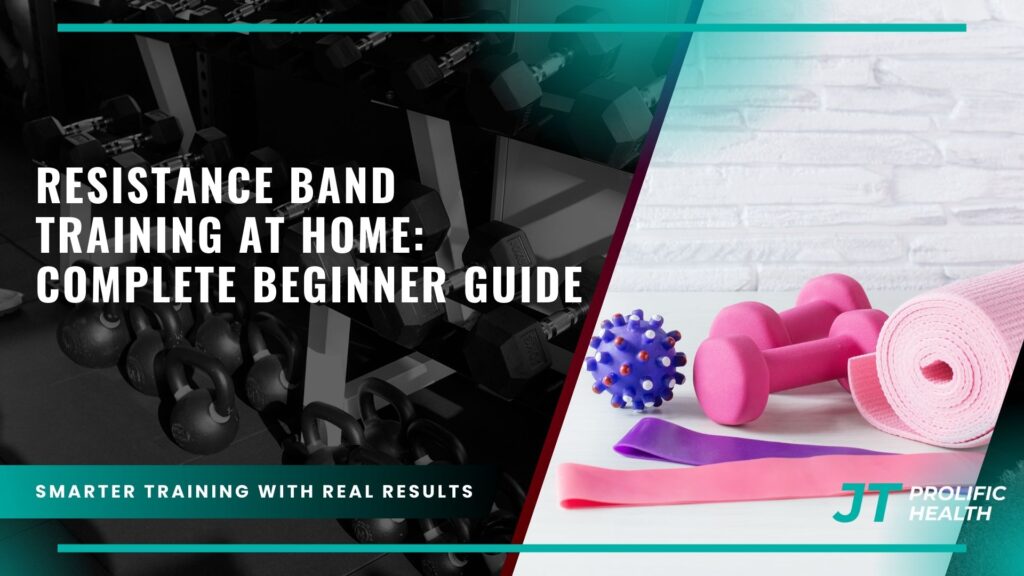Resistance band training has revolutionized home fitness, offering an accessible and effective way to build strength, improve flexibility, and maintain overall health without the need for expensive gym memberships or bulky equipment. These versatile tools have gained tremendous popularity among fitness enthusiasts of all levels, from beginners taking their first steps into structured exercise to seasoned athletes looking to supplement their training routines.
The beauty of resistance band training lies in its simplicity and effectiveness. Unlike traditional weights that rely on gravity for resistance, bands provide variable resistance that increases as the band stretches, creating a unique training stimulus that challenges muscles throughout the entire range of motion. This progressive resistance pattern closely mimics the natural strength curve of human muscles, making it an ideal training tool for functional movement patterns.
What makes resistance bands particularly appealing for home workouts is their incredible versatility and space efficiency. A complete set of resistance bands can easily fit in a small drawer or travel bag, yet provide resistance equivalent to hundreds of pounds of traditional weights. This portability means you can maintain your fitness routine whether you’re at home, traveling for business, or simply prefer the privacy and convenience of exercising in your own space.
The accessibility of resistance band training extends beyond physical convenience. These tools are generally more affordable than traditional gym equipment, making fitness accessible to people with varying budgets. Additionally, resistance bands are inherently safer than free weights, as they don’t pose the risk of dropping heavy objects or losing control during exercises. The elastic nature of bands provides a more forgiving resistance that reduces the likelihood of injury while still delivering effective muscle stimulation.
For those new to exercise or returning after a long break, resistance band training offers a gentle yet progressive introduction to strength training. The bands allow for easy adjustment of resistance levels, enabling users to start with lighter tensions and gradually progress as their strength and confidence improve. This scalability makes resistance bands suitable for rehabilitation purposes, general fitness maintenance, and serious strength building.
Key Takeaways
- Progressive Resistance: Resistance bands provide variable resistance that increases throughout the range of motion, offering unique training benefits that complement traditional weight training methods.
- Space and Cost Efficient: A complete resistance band system requires minimal storage space and costs significantly less than traditional gym equipment while providing comparable training benefits.
- Versatility in Exercise Selection: Resistance bands can target every major muscle group through various exercise modifications, making them suitable for full-body workouts and specific muscle targeting.
- Safety and Accessibility: The elastic nature of bands reduces injury risk compared to free weights while accommodating all fitness levels through easily adjustable resistance.
- Functional Movement Patterns: Band exercises often incorporate multiple muscle groups and movement planes, promoting functional strength that translates to daily activities and sports performance.
- Convenience Factor: Home-based resistance band training eliminates travel time to gyms, scheduling constraints, and monthly membership fees while providing privacy and flexibility.
- Progressive Overload Capability: Despite their simple appearance, resistance bands can provide sufficient challenge for strength gains through various progression methods including increased tension, longer holds, and advanced exercise variations.
Understanding Resistance Band Training Fundamentals

Resistance band training operates on the principle of elastic resistance, which differs fundamentally from traditional weight training. When you stretch a resistance band, the tension increases progressively, creating what exercise scientists call “accommodating resistance.” This means the resistance is lighter at the beginning of the movement when your muscles are in a mechanically disadvantaged position and increases as you move into stronger positions.
The science behind resistance band effectiveness lies in this variable resistance pattern. Research has shown that muscles can generate more force in certain portions of their range of motion, typically in the middle ranges where leverage is optimal. Traditional weights provide constant resistance throughout the movement, but bands naturally accommodate this strength curve by providing less resistance where you’re weakest and more where you’re strongest.
Different types of resistance bands serve various training purposes. Loop bands, also called mini bands, are excellent for activation exercises and targeting smaller stabilizing muscles, particularly around the hips and glutes. Tube bands with handles provide versatility for upper and lower body exercises, while flat therapy bands offer the most range of resistance levels and exercise possibilities. Understanding which type of band to use for specific exercises and goals is crucial for maximizing training effectiveness.
The resistance levels in bands are typically categorized by color coding, though this varies between manufacturers. Generally, lighter colors like yellow or red indicate lower resistance, while darker colors like blue, black, or purple represent higher resistance levels. Many successful home training programs utilize multiple resistance levels to accommodate different muscle groups and exercise types within the same workout session.
Essential Equipment and Setup for Home Training


Creating an effective resistance band training space at home requires minimal equipment but thoughtful setup. The most basic requirement is adequate floor space – approximately 6 feet by 6 feet provides sufficient room for most exercises. Unlike traditional weight training that requires specialized flooring, resistance band training can be performed on any surface, though a yoga mat or exercise mat provides comfort and stability during floor-based exercises.
A complete resistance band training kit should include multiple resistance levels to accommodate different muscle groups and exercise progressions. Starting with a set that includes light, medium, and heavy resistance bands provides the foundation for comprehensive training. Many manufacturers offer starter kits that include various band types, door anchors, and accessories, making it easy to begin training immediately.
Door anchors are particularly valuable accessories that dramatically expand exercise possibilities. These simple devices allow you to securely attach bands to doorways at various heights, creating anchor points for exercises that would otherwise require gym equipment. When using door anchors, ensure the door is solid and closes securely, and always check the anchor position before beginning exercises to prevent accidents.
Storage and organization of resistance band equipment contribute significantly to training consistency. Unlike weights that require substantial storage solutions, resistance bands can be stored in a small container or hung on simple hooks. Keeping bands easily accessible encourages regular use and maintains the convenience factor that makes home training appealing.
Safety considerations for home setup include ensuring adequate clearance around your exercise area to prevent hitting furniture or walls during dynamic movements. Inspect bands regularly for signs of wear, particularly at attachment points and areas that experience high stress. Replace worn bands promptly, as failure during exercise can cause injury and interrupt training progress.
Professional guidance can significantly enhance your resistance band training experience. Understanding how to select qualified fitness professionals who understand resistance training principles can help you develop proper form and create effective workout programs tailored to your specific goals and fitness level.
Fundamental Exercises and Movement Patterns


Mastering fundamental resistance band exercises creates the foundation for all advanced training progressions. Upper body exercises form a crucial component of any comprehensive program, with the chest press being one of the most effective movements for developing pushing strength. To perform a band chest press, anchor the band behind you at chest height, grasp the handles, and press forward while maintaining proper posture and core engagement.
Rowing movements provide essential balance to pressing exercises by targeting the posterior chain muscles that are often neglected in daily activities. Band rows can be performed from various angles – high rows target the upper back and rear deltoids, while low rows emphasize the latissimus dorsi and middle trapezius. The key to effective rowing is initiating the movement by squeezing the shoulder blades together before pulling with the arms.
Lower body training with resistance bands offers unique advantages over traditional weight training. Squats with bands placed above the knees or under the feet provide external resistance while promoting proper movement patterns. The lateral walk with mini bands around the ankles or above the knees effectively targets the gluteus medius, a critical muscle for hip stability that’s difficult to isolate with traditional exercises.
Core training with resistance bands adds an element of instability that challenges the deep stabilizing muscles more effectively than static exercises. Band-resisted planks, where the band pulls the body in different directions, force the core muscles to work harder to maintain proper alignment. Rotational exercises using bands help develop the spiral patterns of muscle activation that are essential for athletic performance and functional movement.
The progression from basic to advanced exercises should follow a systematic approach that gradually increases complexity and resistance. Beginning with shorter ranges of motion and lighter resistance allows the nervous system to adapt to new movement patterns before adding challenge. As proficiency improves, exercises can be progressed by increasing band tension, adding unstable surfaces, or combining multiple movement patterns into complex exercises.
Understanding proper form and technique is crucial for maximizing benefits while minimizing injury risk. Many people benefit from professional instruction when starting their fitness journey. Learning about comprehensive training guidance can help ensure you develop proper movement patterns from the beginning, creating a solid foundation for long-term success.
Creating Effective Workout Programs
Designing effective resistance band workout programs requires understanding the principles of exercise prescription and progression. A well-structured program balances different movement patterns, muscle groups, and training intensities to promote comprehensive fitness development while preventing overuse injuries. The frequency of training sessions should align with your current fitness level and recovery capacity, typically ranging from three to five sessions per week for most individuals.
Program periodization becomes important for continued progress and motivation. Beginning with a foundation phase that emphasizes movement quality and basic strength, programs can progress through phases that emphasize different training goals such as strength endurance, power development, or specific skill acquisition. Each phase should last approximately 4-6 weeks to allow adequate adaptation before introducing new challenges.
Workout structure should follow a logical sequence that prepares the body for exercise and promotes recovery. A typical session begins with a dynamic warm-up that includes light band exercises to activate major muscle groups and increase blood flow. The main training portion should address major movement patterns including pushing, pulling, squatting, and rotating movements, while the cool-down phase should include static stretching and relaxation techniques.
Progressive overload with resistance bands requires creativity since you can’t simply add weight plates like traditional training. Progression methods include increasing band tension by shortening the band, using thicker or multiple bands, increasing repetitions or time under tension, advancing to more challenging exercise variations, or reducing rest periods between exercises. Tracking these progressions helps maintain motivation and ensures continued improvement.
Combining resistance band training with other exercise modalities can enhance overall fitness and prevent boredom. Bands complement cardiovascular exercise, flexibility training, and other strength training methods. For those interested in comprehensive fitness approaches, exploring bodyweight training methods can provide additional options for creating varied and engaging workout routines.
Recovery and rest days are essential components of any effective training program. Resistance band training, while generally easier on the joints than heavy weight training, still creates muscle damage that requires time to repair and adapt. Scheduling adequate rest, maintaining proper nutrition, and getting sufficient sleep are crucial factors that determine training success and long-term adherence.
Advanced Techniques and Progressions
As proficiency with basic resistance band exercises develops, advanced techniques can significantly enhance training effectiveness and continue challenging the body’s adaptive mechanisms. Pre-exhaustion techniques involve performing isolation exercises before compound movements to specifically target weaker muscle groups. For example, performing band lateral raises before overhead presses ensures the deltoids receive adequate stimulation even if other muscles are stronger.
Compound setting involves performing two exercises for the same muscle group back-to-back without rest. This technique is particularly effective with resistance bands because transitions between exercises are quick and seamless. A chest press immediately followed by chest flies creates intense muscle stimulation that promotes strength and endurance adaptations.
Tempo manipulation adds another dimension to resistance band training by controlling the speed of movement phases. Slow eccentric (lengthening) phases increase time under tension and promote strength gains, while explosive concentric (shortening) phases develop power and athletic performance. A typical tempo prescription might involve a 3-second lowering phase, 1-second pause, and explosive lifting phase.
Combining bands with other equipment creates hybrid training methods that offer unique benefits. Using bands with dumbbells provides both constant and variable resistance in the same exercise, creating a training stimulus that’s impossible to achieve with either tool alone. Similarly, combining bands with stability balls or suspension trainers adds instability challenges that enhance core strength and proprioception.
Unilateral training with resistance bands addresses muscle imbalances and promotes functional strength development. Single-arm and single-leg exercises challenge stability and coordination while ensuring both sides of the body develop equally. These exercises are particularly valuable for athletes and individuals recovering from injuries where bilateral differences may exist.
For those serious about maximizing their training results, working with experienced professionals can provide valuable insights into advanced programming and technique refinement. Understanding professional strength training approaches can help you incorporate proven methodologies into your home training routine, ensuring continued progress and optimal results.
Frequently Asked Questions
How much resistance should I start with as a beginner?
Beginners should start with light to medium resistance bands that allow them to complete 12-15 repetitions with proper form while feeling challenged in the last few repetitions. It’s better to start too light and progress gradually than to begin with excessive resistance that compromises form and increases injury risk.
Can resistance bands really replace traditional weights for strength training?
While resistance bands can provide significant strength gains and muscle development, they offer different training stimuli than traditional weights. Bands excel at providing variable resistance and functional movement patterns, while weights provide consistent resistance throughout the range of motion. Many effective training programs combine both tools for optimal results.
How often should I replace my resistance bands?
Quality resistance bands can last 6-12 months with regular use, depending on the frequency of training and care taken during storage. Inspect bands regularly for small nicks, thinning areas, or changes in elasticity. Replace bands immediately if you notice any signs of wear to prevent failure during exercise.
Are resistance bands safe for people with joint problems?
Resistance bands are generally considered joint-friendly because they provide smooth, variable resistance without the impact forces associated with traditional weights. However, individuals with specific joint conditions should consult healthcare providers before beginning any exercise program and may benefit from professional guidance to ensure proper exercise selection and modification.
What’s the difference between loop bands and tube bands?
Loop bands (mini bands) are continuous circles of elastic material, typically used for activation exercises and targeting smaller muscle groups, particularly around the hips and glutes. Tube bands feature handles and can be anchored at various points, making them more versatile for full-body exercises and upper body training.
How do I prevent resistance bands from snapping during exercise?
Prevent band failure by inspecting equipment before each use, avoiding overstretching beyond 2.5 times the resting length, keeping bands away from sharp objects and extreme temperatures, and replacing worn bands promptly. Always maintain control during exercises and avoid sudden, jerky movements that create excessive stress.
Can I build significant muscle mass using only resistance bands?
Resistance bands can promote muscle growth through progressive overload principles, though the mechanisms differ from traditional weight training. Bands excel at creating metabolic stress and time under tension, both important factors for muscle development. Combining multiple progression methods and maintaining consistency can lead to significant improvements in muscle size and strength.
What should I look for when purchasing resistance bands?
Quality resistance bands should be made from durable materials like natural latex or high-grade synthetic rubber, feature comfortable handles with secure attachment points, include multiple resistance levels, and come with useful accessories like door anchors and exercise guides. Avoid extremely cheap options that may fail prematurely and pose safety risks.
Conclusion
Resistance band training represents a paradigm shift in how we approach fitness, offering unprecedented convenience, versatility, and effectiveness for home-based exercise programs. The journey from beginner to advanced practitioner requires patience, consistency, and a commitment to proper form and progressive overload principles. What begins as a simple introduction to elastic resistance can evolve into a sophisticated training system capable of delivering remarkable results.
The accessibility of resistance band training removes many traditional barriers to fitness participation. Cost, space, and time constraints that often prevent people from maintaining regular exercise routines become manageable when quality training can occur in any location with minimal equipment. This democratization of fitness empowers individuals to take control of their health and wellness regardless of external circumstances.
Success with resistance band training ultimately depends on the same fundamental principles that govern all effective exercise programs: consistency, progression, and proper technique. While the equipment may be simple, the potential for transformation is profound. Whether your goals involve general health maintenance, specific strength development, or athletic performance enhancement, resistance bands provide a viable path forward.
At Prolific Health, we understand that beginning a fitness journey can feel overwhelming, regardless of the training method chosen. Our experienced team provides the guidance and support necessary to transform uncertainty into confidence and goals into achievements. The combination of professional expertise and the convenience of resistance band training creates an powerful foundation for long-term fitness success.




